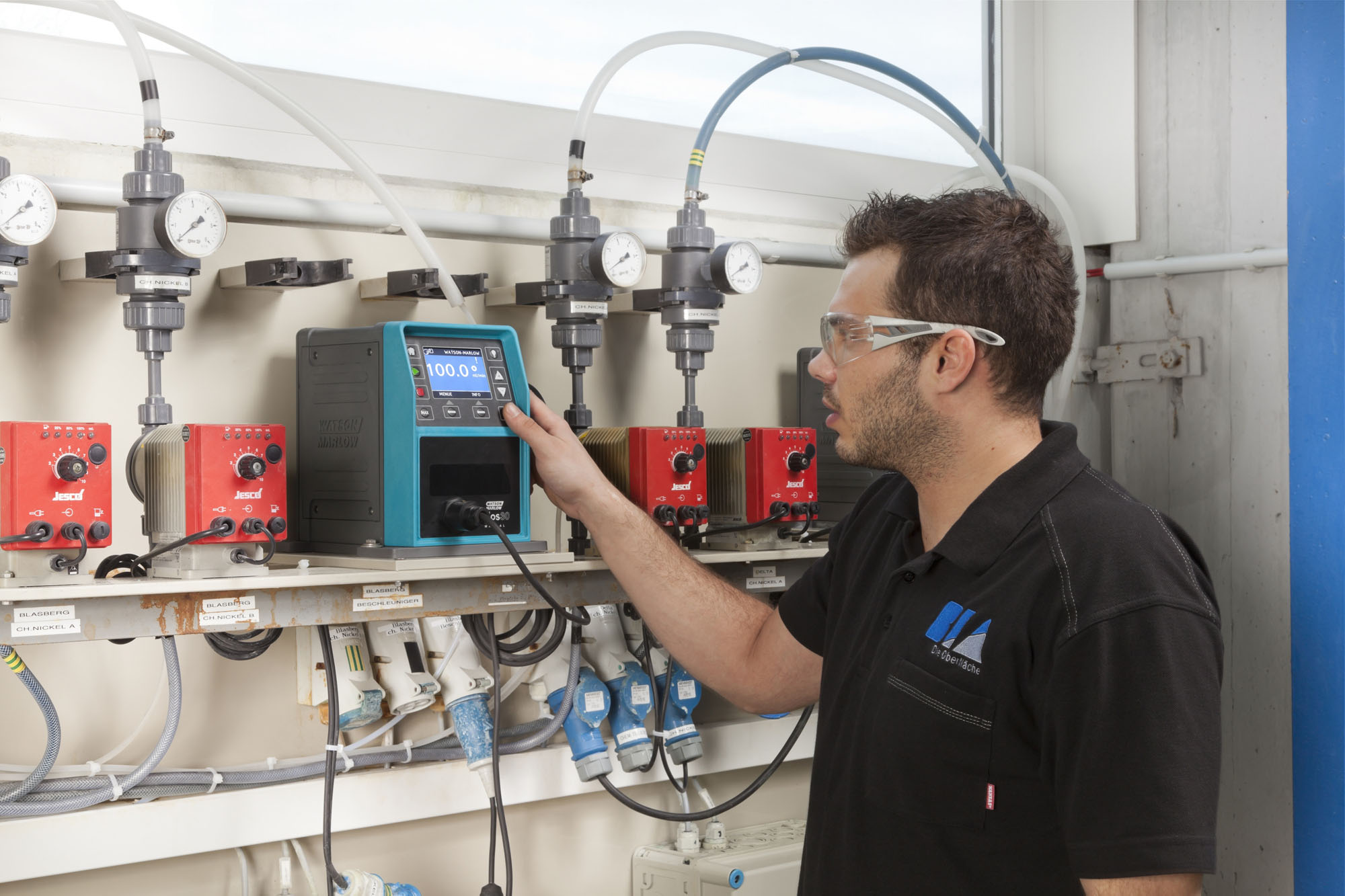Qdos Pumps Replace Diaphragm Pumps In Electroplating Application
BIA Kunststoff- und Galvanotechnik, leading manufacturer for the automotive industry, is using Qdos pumps from Watson-Marlow Pumps to dose process-critical additives into its electroplating machines

BIA Kunststoff- und Galvanotechnik, a leading manufacturer of plastic components with metallic surfaces for the automotive industry, is using Qdos pumps from Watson-Marlow Pumps Group to dose process-critical additives into its electroplating machines. Replacing diaphragm pump technology, Qdos was selected for its precision, reliability and low maintenance costs.
Car manufacturers are increasingly demanding metal-plated plastic surfaces. Chrome surfaces for both interiors and exteriors increases prestige considerably, particularly in mid-range and luxury cars. As a result, these chrome-plated controls and trims must meet the highest technical and aesthetic requirements.
At the headquarters of BIA in Solingen near Düsseldorf, this 950-employee company operates a total of four electroplating machines that help produce more than 450,000 metal-plated plastic parts every day.
Critical dosing
“Our core competence is electroplating, and we have designed our own state-of-the-art electroplating machines,” says Alexander Zabel, Maintenance Manager at BIA. Each of the company’s four electroplating machines has a dosing station, which is where several dosing pumps introduce important additives into the electroplating baths, such as brighteners, wetting agents and accelerators.
“In modern electroplating machines, the question of when, where and in what form additives are dosed plays a crucial role in the quality of the end product,” explains Mr Zabel. “This means that the dosing station is a vital part of the electroplating process.”
The highest level of precision is required to ensure the correct concentration of additives in the electroplating baths, and ultimately the quality of the coating on the plastic parts. In addition, BIA places the utmost importance on gentle transportation with as little pulsation as possible. Failure to achieve this could mean that the transported additives become “shattered” with the result that they cannot deliver the desired effect in the electrolyte.
Diaphragm pumps reach their limit
Until recently, diaphragm pumps were used as standard in the dosing stations at BIA, but they were proving problematic.
“The diaphragm pumps simply failed to provide the essential level of precision we require when transporting additives,” says Christian Fanenbruck who, as master electroplater, is responsible for two of the four electroplating machines at BIA. “We frequently had to carry out volumetric measurements to ensure precision.”
However, a more serious issue was the frequent, time-consuming and costly maintenance incurred by the diaphragm pumps.
“We sometimes dose highly concentrated acids and these frequently damaged the pump components that were transporting the media, so the parts had to be replaced,” continues Mr Fanenbruck. “What’s more, the diaphragm dosing pumps produced a flow with a high level of pulsation. This had a negative impact on the quality of the substances being transported. Surfactants are a particular example of where it’s important to pump at a steady rate to avoid damaging their structures.”
Qdos from Watson-Marlow
According to Mr Zabel, the company had been looking for alternatives to diaphragm pumps for a long time, and “struck gold” when it found Watson-Marlow.
“In May 2013 we decided to test the new Qdos dosing pump,” he says. “We were impressed with the results right from the start. Firstly, Qdos provides 100% precision. Typically we transport volumes of 100 ml/min; and when we set the Qdos to 100 ml it transported precisely that amount, even along a route that was more than 50 metres long in places. This makes the frequent need to carry out volumetric measurements a thing of the past.” In contrast to diaphragm pumps, the Qdos pump also works without any accessories, such as seals or check valves, making installation easier.
Practically no maintenance
The main advantage of the Qdos pump from Watson-Marlow is the long maintenance intervals, short downtimes and low maintenance costs. The only wearing part in the whole pump is the patented ReNu pump head, which can be replaced as a complete part within a few minutes and does not require tools or any special training.
“We still haven’t been able to see how easy it is to replace the pumphead because we simply haven’t needed to yet,” says Mr Zabel. “We installed the first Qdos pumps in May 2013 and they haven’t caused us any problems since, even though they’re in constant use six days a week.”
Qdos pumps from Watson-Marlow have now been installed in two of the four electroplating machines at BIA – making a current total of 12 pumps. However, more are certain to follow.
“We will gradually replace all our diaphragm pumps with Qdos dosing pumps from Watson-Marlow,” concludes Mr Zabel. “Put simply, the Qdos pumps installed in our plant have been extremely reliable and have required practically no maintenance so far. And that’s exactly what we want; after all, who likes maintenance?”
CONTACT
Mike Sullivan
Watson Marlow Pumps Group
mike.sullivan@wmpg.com
www.wmpg.co.uk
+44 (0) 1326 370370
Monday 6 October 2014 / file under Machinery | Engineering | Automotive


